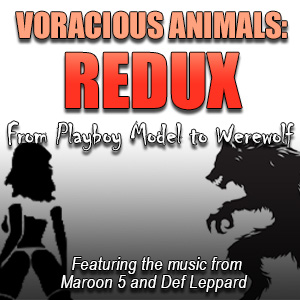When we started Last Movie Outpost, it wasn’t for us. It was just clear that sensible people needed somewhere to hang out and shitpost about movies, television, streaming and entertainment in general that wasn’t an ego project for some internet meglomaniac, or under constant threat from the over developed ban-hammer of thin skinned moderators who couldn’t handle dissent. So it was for you, our Outposters. A community. This is why we still get all misty eyed when one of you wants to share something here with their fellow Outposters. Like DwC and Hell Of The Living Dead.
DwC is mysterious. He moves among you all, even now. Yet you know him by another name. Masterpiece Theater may yet become a regular feature from the man behind the mask.
If you have something you want to share with our community, and you don’t mind making a grown man cry with happiness, then send it to [email protected]. Also, an apology. It turns out our spam filter has been overly enthusiastic and when we finally checked back there, there were a couple of submissions it had Joseph Fritzl’d to its secret place. If you were thinking we had rejected it and were too rude to even respond, please be assured that is not the case. We are just a bit shit with technology. Anyway, here is DwC…
Hell Of The Living Dead

Welcome to Masterpiece Theater and the first edition – Hell of the Living Dead (1980). This was directed by Bruno Mattei (credited as Vincent Dawn) and written by Claudio Fragasso.
**Spoiler Warning**
After a chemical leak unleashes a wave of infection that kills, then reanimates the scientists and technicians at a secretive installation known as Hope Center 1 in Papua New Guinea, a group of eco-terrorists overtake a consulate in Barcelona, Spain with the singular demand that all the Hope Centers be closed, and the research being done therein be made public. During the siege, an Interpol swat team is deployed to eliminate the terrorist threat.
The situation is rectified, and all terrorists are eliminated just as communications with Hope Center 1 are severed. Interpol, fearing another terrorist attack, sends the four-man swat team to Papua New Guinea. Their mission: take whatever measures necessary to secure Hope Center 1 and rescue any remaining researchers. Upon arriving they encounter a reporter and her camera man; Lia and Pierre, who are investigating a wave of unexplained violence engulfing the island nation. They are being transported by an unnamed man and his wife Josie, who have a young, wounded child.
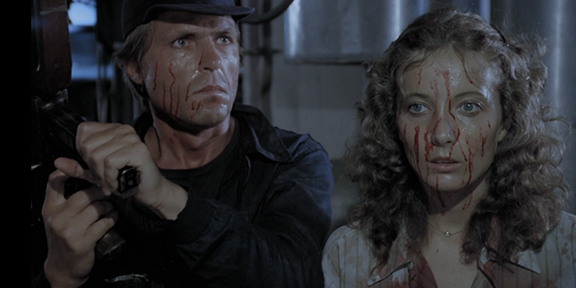
Before long the team realizes that the dead are returning to life and attacking the living across Papua New Guinea and that this phenomenon may be directly related to the work being carried out by the Hope Centers as they battle their way through hoards of the undead to reach the epicenter; Hope Center 1.
I don’t like to throw around the word “masterpiece” with reckless abandon but, Hell Of The Living Dead may quite possibly be the most profoundly misunderstood masterpiece in the history of cinema.

Watching this film, the first thing that grabs you is the flawless editing and pacing. The consulate raid is so intense that it wouldn’t be out of place as lesser film’s climactic finale. We are introduced to these characters: Lt. Mike London, Vincent, Zantoro, and Osborne, and are immediately taken with the precision in which they silently and mercilessly eliminate their targets. This scene also serves another purpose however, and that is the setting up of the masterful social commentary employed by Mattei and Fragasso.
Just one of the many themes weaved throughout the narrative is the complete disregard for human life by those in power, demonstrated when our “heroes” murder several surrendering men within the consulate. Right from the start we understand this will not be just another horror film, but a deeply challenging critique of the geopolitical landscape of the late 70s and early 80s. The exterior cinematography is jaw dropping, but the sparingly used interior set design is equally impressive; the Hope Center interiors are very authentic and almost futuristic looking, and if I didn’t know better, I would say Mattei shot these portions of the film at NASA.
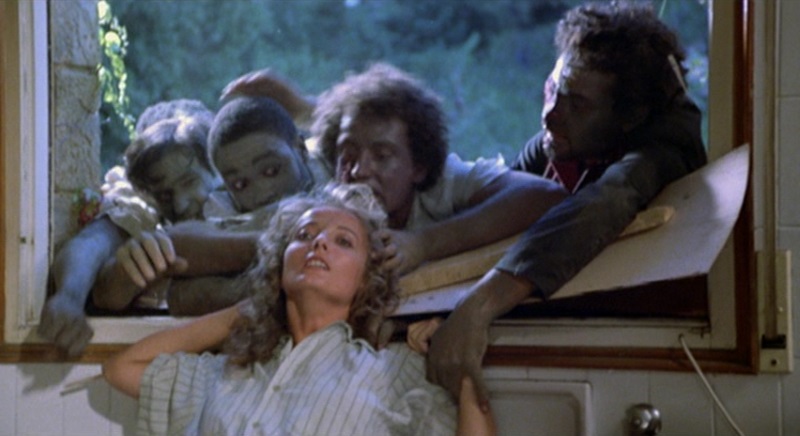
Most impressive of all however is Mattei’s usage of stock footage throughout the film, often showing wildlife not native to New Guinea and thus brilliantly symbolizing the threat posed to not just to the human population of Papua New Guinea, but to all life on earth.
The team arrives in Papua New Guinea, and while getting their bearings they see the rest of the cast in a distant, abandoned missionary compound. It is here Mattei stages one of the most brilliantly directed scenes in horror cinema history. The tension rises to unbearable levels as the editing cuts from a sick child slowly succumbing to, and reviving from illness, to Josie exploring an abandoned building and finding an injured priest, and to Lia and Max unknowingly being descended upon by the living dead.

The action cuts from one scene to another, ratcheting up the suspense until it reaches its crescendo when Josie approaches the priest with an offer of help, only to have him spin around and reveal a face in ruin, mouth twisted into an unholy, blasphemous grin. It’s as if someone took the restaurant scene in The Godfather, in which Michael kills Sollazzo and Capt. McClusky, concentrated it into liquid form, then jet blasted it directly into your open eyeballs with a firehose.
Josie is attacked and killed as the swat team arrives to save the others. They are too late for the child and father, however. As Max investigates their vehicle, he sees to his horror the boy devouring his father. In another telling scene, the boy is pulled from the truck and immediately shot, repeatedly, by team leader Lt. London. It’s important to remember that at this point our characters are not aware of the undead threat, and yet their first reaction to a sick child is shoot him. This is very powerful, unshakeable stuff.
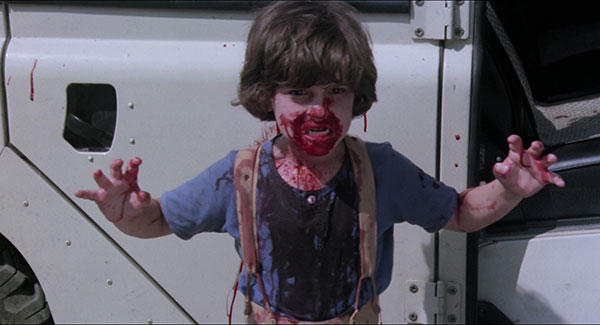
Upon escaping the compound Lia informs the swat team of her investigation there, and we begin to get hints that the team’s mission may not be as noble as first thought. After ditching one of the vehicles due to mechanical issues, the team happens upon a village of primitive natives. Here Mattei captures, with extreme accuracy and cultural sensitivity, a scene detailing how the primitive tribes in Papua New Guinea can only be approached by topless women in body paint to establish friendly intentions.
After witnessing a tribal funerary rite in a scene handled with such tact, class, and respect that it borders on beautiful (It is said that there is stock footage used in this scene, but if there is, it is integrated so seamlessly that it’s difficult to tell), the team decides to rest with the native tribe for the night. As darkness falls however, the undead attack in an explosion of chaos and carnage that sees most of the villagers killed and devoured while the rest flee into the jungle, into certain doom, as our protagonists escape in their utility vehicle.
What follows is the most heartbreaking and poignant scene of not just this film, but possibly any film ever made; the UN has convened to discuss the crisis in Papua New Guinea, with the Prime Minister begging for help from the rest of the world while being told obvious lies and dismissed outright. The anguish, confusion, anger, and pure terror is so clearly evident in his eyes and voice that it is crushing to behold. This is a man who has lived a nightmare, and the resultant PTSD is all over his face.
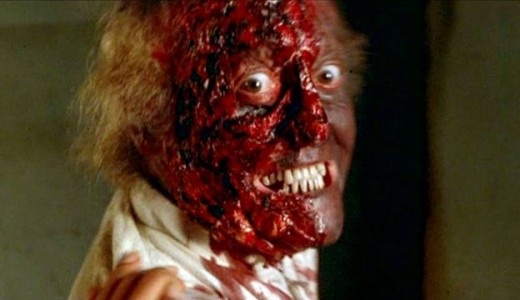
I was lucky enough to see this film in a theater and there wasn’t a dry eye in the house by the time this short scene came to a close. One wonders; if this had been an American production, would the actor have been nominated for an Academy Award? Unfortunately, his role is uncredited, so the identity of this brilliant thespian may sadly be lost to time.
Back in the story proper, as the reality of the situation sets in members of the swat team begin to manifest signs of mental strain by continually refusing to fire their weapons at the heads of the walking corpses, which has been established as the only method of killing them, in an act of unconscious denial. While Zantoro does shoot for the head, his weakening mental state is most obvious as he takes greater and greater risks.
This comes to a head when the team explores a deserted plantation house and Osborne finds a closet full of stage costumes while searching for survivors in the basement. In a mad bid to reclaim his childish innocence, perhaps out of guilt for his previous actions as a member of an Interpol hit squad, he dons a tutu and top hat, and starts dancing around with a cane, as anyone would in this situation. Before he knows it, the dead are everywhere, and he is surrounded and killed. This pushes his best friend Zantoro over the edge, and it should be noted that Franco Garofolo’s performance in this portion of the film is a masterclass in how to display emotion without using dialogue. The remaining members of the group barely escape the plantation house and make the final push to Hope Center 1.
When they arrive at the seemingly deserted facility, the remaining team members immediately begin to make their way to the control room. They call the elevator, and the doors open to unleash dozens of the living dead who grab Pierre and devour him while the others; stunned, exhausted, and now half mad, look on helplessly. Zantoro finally snaps and begins to fire indiscriminately until he too gets pulled into the elevator as the doors close.
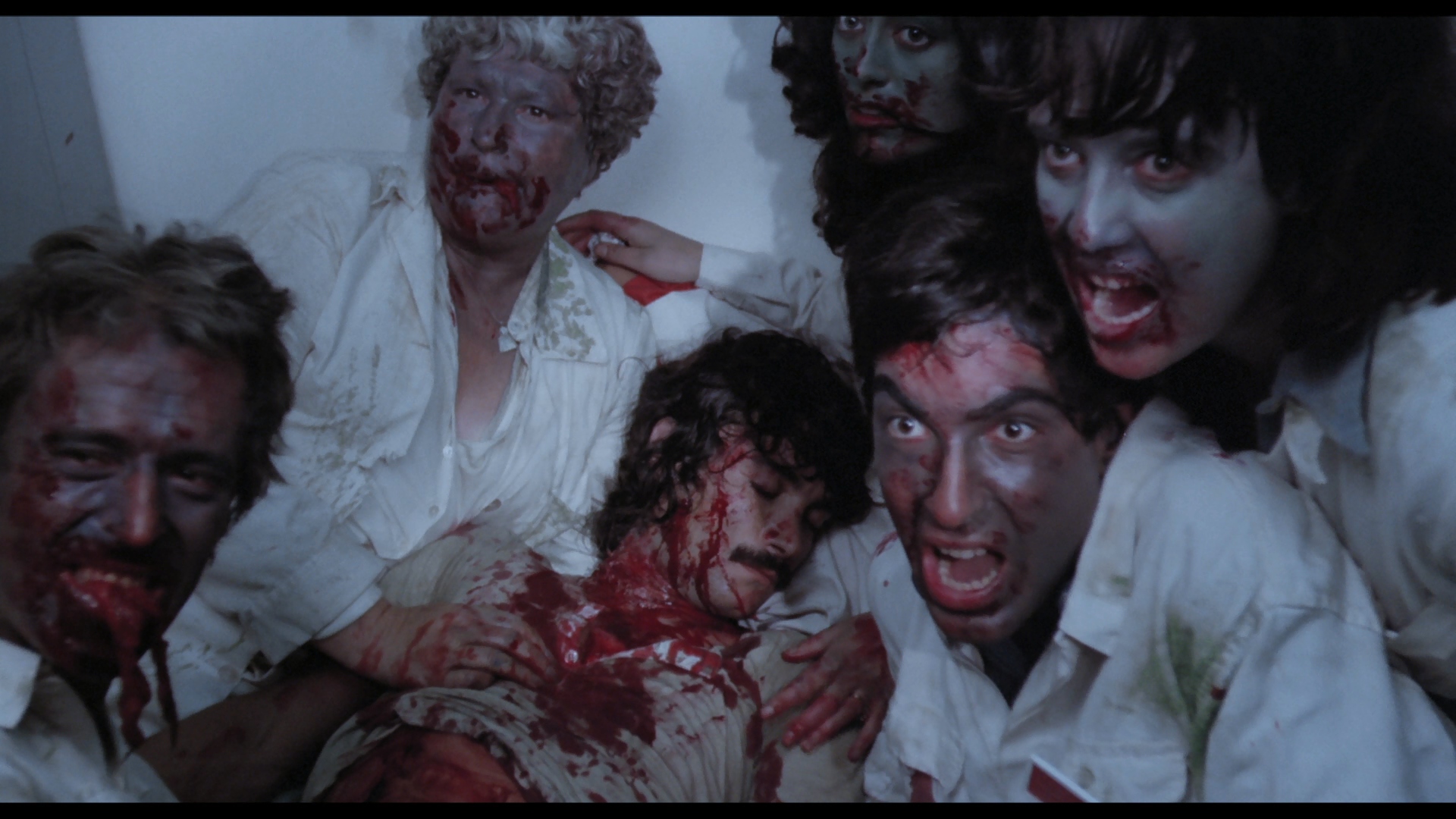
As the elevator rises, the sound of screams and the sight of blood streaking down the walls of the elevator shaft are all that is left of Pierre and Zantoro. Shortly after, Lt. London is attacked and bitten in one of many brilliant homages to Romero’s Dawn of the Dead. In his final moments, Lt. London achieves his true objective by destroying all evidence of the research that was being done at the center. Lia, having now pieced together the true nature of Operation Sweet Death; the development of a chemical agent that would be unleashed upon third world nations and cause the people there to devour one another in an inhumanly cruel attempt to curb world overpopulation, explains it all to Vincent just as the living dead surround and kill them both.
The symbolism here is executed with perfection as Lia, the only one who could ‘see’ what was really happening, has her eyes pushed out of her head from inside of her mouth.
Back on the mainland, a young couple leaves a bar as news breaks of the impending disaster to scoffs from the other patrons. As they approach a man for a light, he turns to reveal that he is one of the living dead. The couple is then suddenly surrounded and killed. The hell of the living dead that was to be the fate of the impoverished, through hubris and callousness, has come for us all.
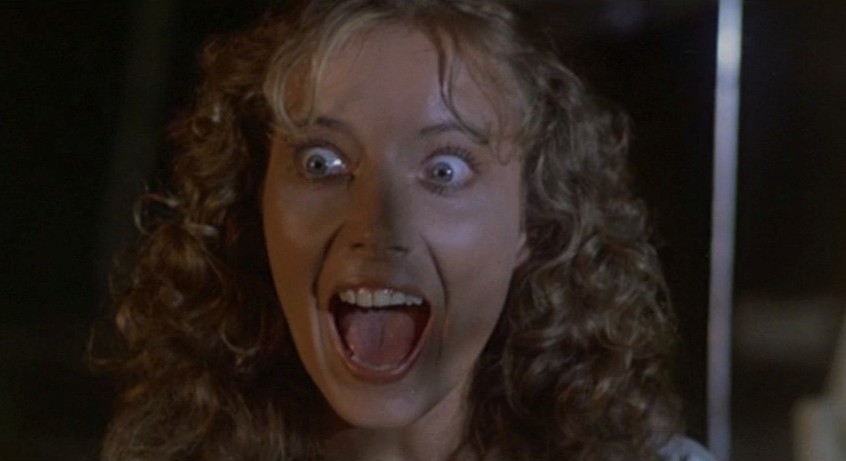
This is a monumentally important film. Mattei’s direction throughout is nothing short of masterful (I was reminded of Fellini on more than one occasion), the acting is stellar, the score by Goblin is wholly unique to this film and compliments the action and tension perfectly, and Claudio Fragasso’s script is flawless. Interesting bit of trivia here is that Fragasso, Like Romero with Day of the Dead, wrote the original script as much more of an epic film involving the entire continent of Africa, but budget restrictions forced rewrites. The result, however, is nothing short of a masterpiece. A perfect film with nary a single fault to be found.
That this brilliant film has gone underappreciated for so long, bursting at the seems with the most confrontational and difficult social commentary this reviewer has ever seen put to celluloid, is a crime. Mattei and Fragasso address so many global and social ills that it’s impossible to address everything. They hold a mirror up to society and tell us without compromise that we too are culpable for the inhumane treatment of the world’s poor by those in power because we ignore it. A message hammered home by the reveal of the true, devastating purpose of the ironically named “Hope” centers.
As a result, Hell of the Living Dead has been atrociously, unfairly, and bafflingly maligned from the day it was released. Perhaps the film was too challenging for viewers and critics, so as some sort of psychological defense mechanism, they dismissed it. But as the ending of the film suggests, you dismiss it at your peril…
14 stars out of 10
LMO has your back! The whole movie is available, remastered right here. May be age-restricted in some puritan, less free, nations.
https://youtu.be/qpcDz3_9WfI?si=Zue5iOGuI0iJirXV
Check back every day for movie news and reviews at the Last Movie Outpost









